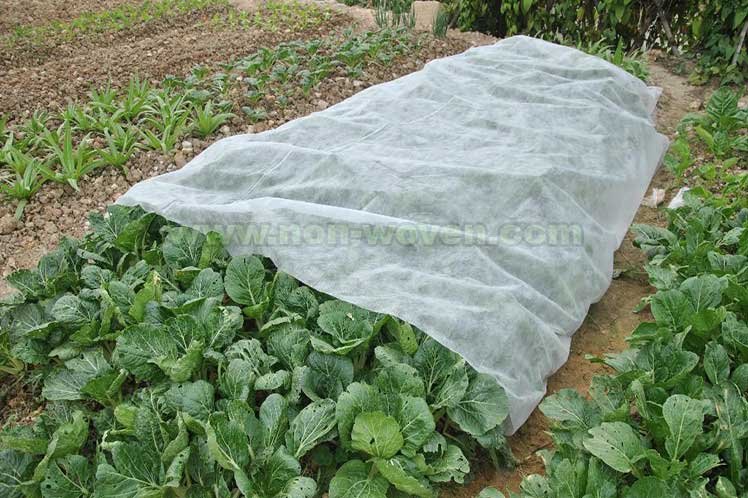
Non-Woven Industry Development. Non-woven fabric was invented in the petrochemical field following the development of plastic cloth (film). It is much lighter and air-conditioned than plastic cloth. It is used extensively in medical and personal hygiene items, such as filters, facial towels and disposable napkins for sanitary use. The technology was developed and then utilized in engineering. Non-woven fabrics are utilized to shield vegetables from damage caused by cold. While non-woven fabric production is more complicated than plastic film, the fundamental raw materials are virtually identical. This includes PVC (polyvinyl chloride), PET (polyethylene), EVA [Ethylene Vinyl Acetate copolymer], PVA (polyvinyl alcohol), etc. When you inflate a traditional plastic film using heat, it produces a thin film. The film is continuous. It can be stretched for a long time. The surface of the film does not have any pores. It is a non-permeabil film which blocks all movement and exchange of molecules. With the development of the textile sector artificial chemical fibers fabricated from the ingredients mentioned above were the latest fads in the textile business. But , in essence these fibers are still made into cloth by traditional weft and warp weaving. The non-woven fabric is created by connecting fibers in the same plane and at different angles in all directions. It is not possible to utilize traditional weaving and warp methods. In comparison to traditional woven fabrics they have superior material properties, and its production process can proceed from the raw material to finished items in one go. This eliminates the drawing process and allows for lower production costs. The industry of apparel has been using non-woven fabrics in large quantities in recent years. Because of the advancements in the field of material science and the advancement of and implementation of production technology nonwoven fabrics have become more varied and are being utilized more extensively. You can find the various materials and products in every moment of our lives. The growth in non-woven material usage in agriculture is due to its lightweight, easy-of-production diversification, cost efficiency and a wide range of uses. Look at this non woven landscape fabric for more information.

Non-Woven Fabrics in Agriculture. Non-woven textiles were introduced to the agriculture in Europe in 1978. They are used to keep carrots warm during early harvesting and to shield against the ravages of whiteflies and tomato leaf viruses. Non-woven fabrics used in the United States to mulch cantaloupes. Sweet peppers. tomatoes. Root vegetables. Carrots. Radishes. Cabbage. Lettuce. They are used to preserve heat, for early harvesting, and insect control. Non-woven materials are good for covering surfaces such as grass-proof mats. They can also increase the temperature of soils by keeping water. Short fiber is also used for the creation of water-absorbing blankets. These are applied on nursery beds to ensure that the roots are able to completely absorb any water. They also function as the primary medium for the production of turf. They can also be used to grow large woody plants like fruit trees and garden trees. Non-woven fabrics, which aren't woven, are used in Taiwan to cover the crops. They are also extensively used to lower energy consumption in greenhouses with large areas. Canopy curtains and double-layered covers reduce heat dissipation and radiation in the evening. High-density spun-bonded non-woven TAVIK fabrics were used in the early days to shade and protect cauliflower bulbs. The fabric's shade capacity was high and low thermal conductivity as well as ease of recyclability led to it becoming a preferred option for farmers. It was then used in the preservation of shade and protection of leaf vegetables, as well as the cultivation and protection of pineapples and fruit trees. Due to Taiwan’s unique climate and ecology the development of the industry of non-woven textiles has been slow. Non-woven fabric manufacturers from Taiwan continue to develop non-woven technologies. They are focusing on the absorption of water as well as air permeability of non-woven fabrics. It is utilized to store and preserve agricultural product. Follow this wholesale agriculture non woven fabric for more information.
